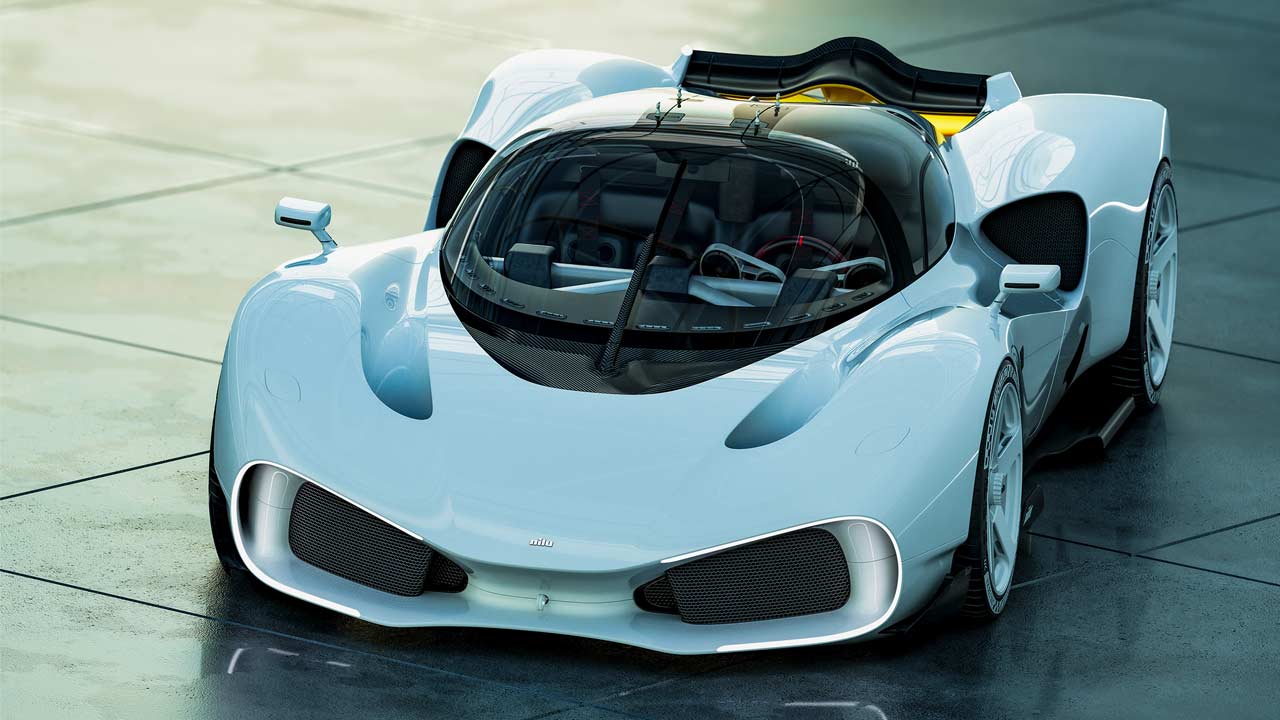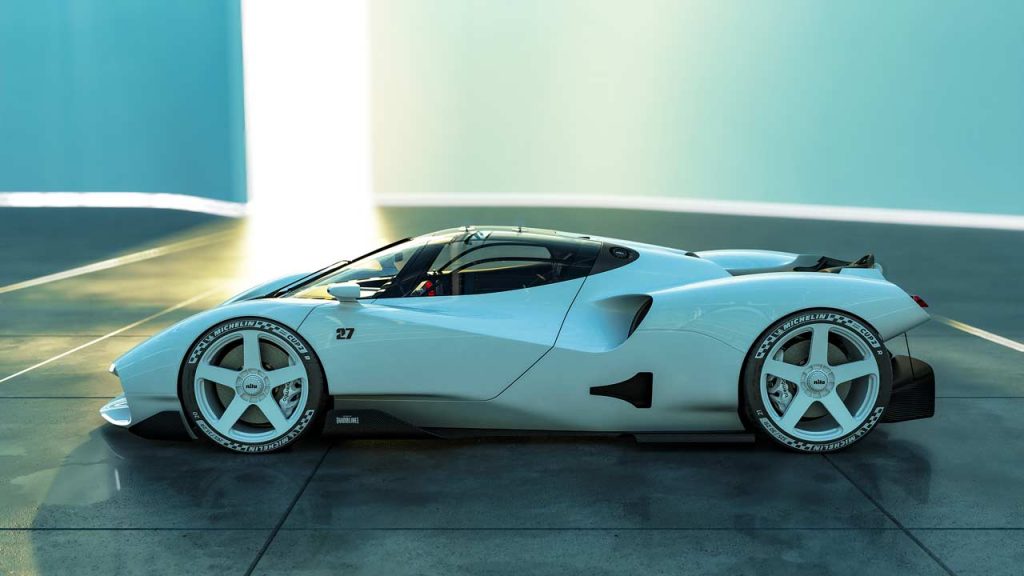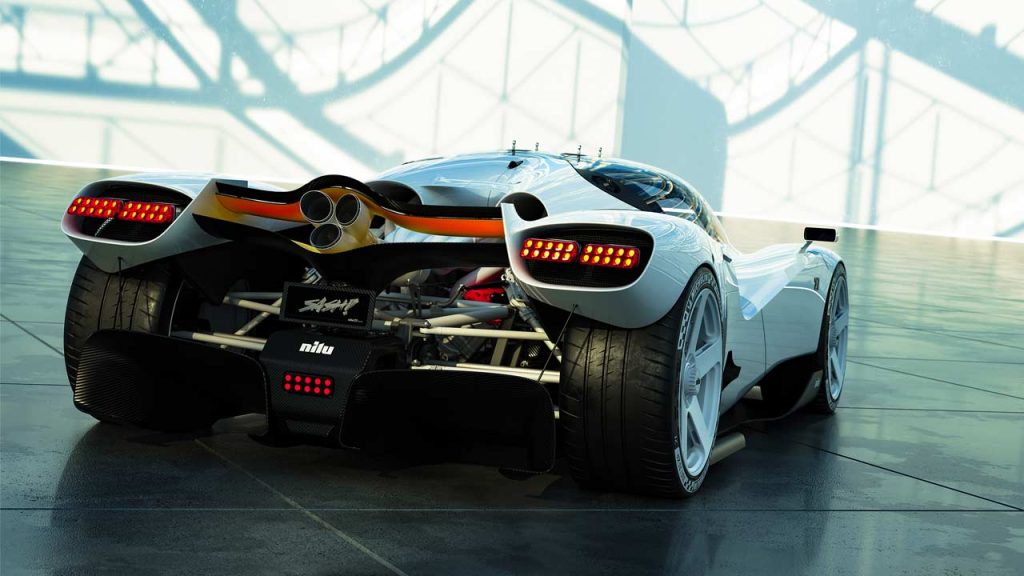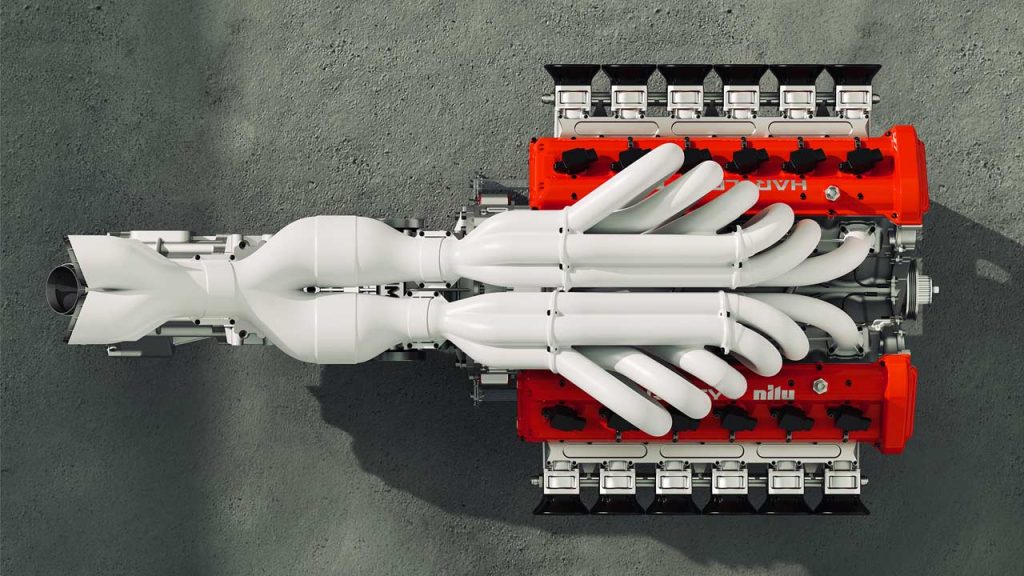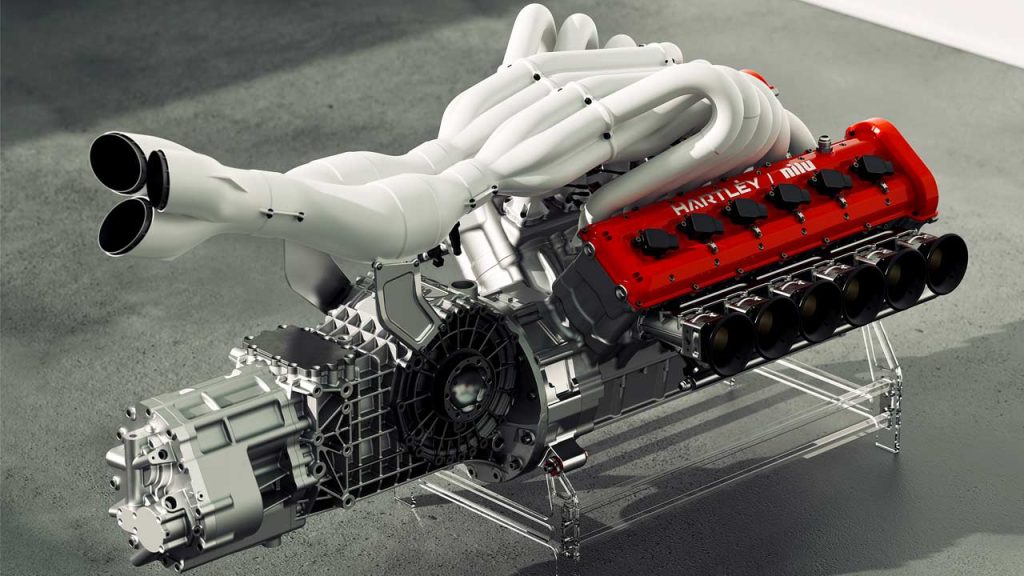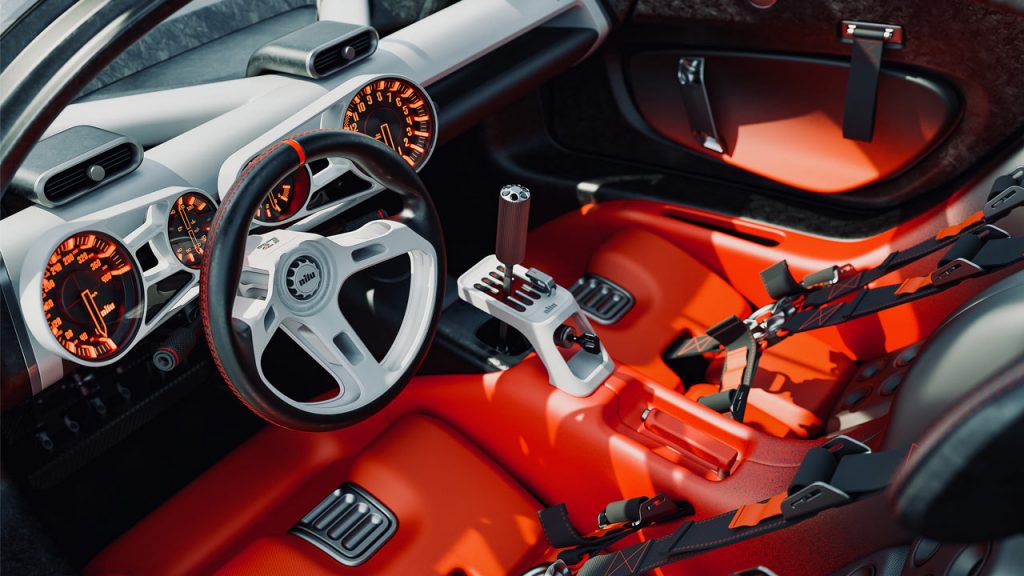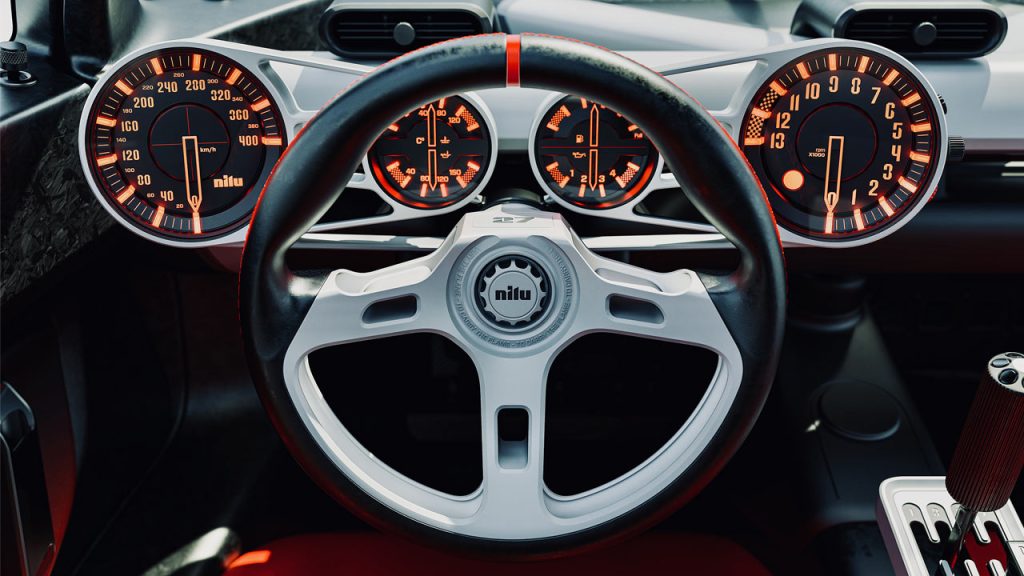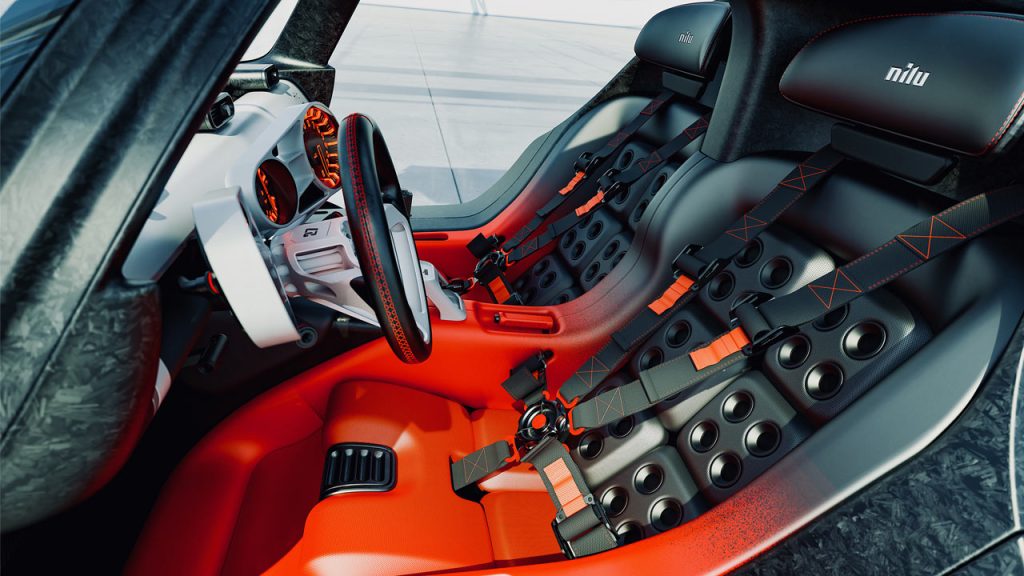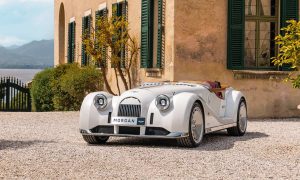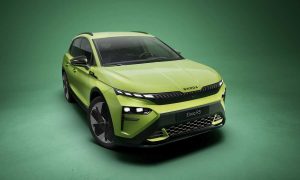In case you didn’t know, “Nilu” is a popular female name/nickname in India and Arab/Urdu-speaking communities. But for car designer Sasha Selipanov, it’s the name of the hypercar of his dreams. Before founding the Nilu27 hypercar brand, Sasha worked for brands including Bugatti, Genesis and Koenigsegg. What we see here is called Nilu Hypercar—which Sasha has been perfecting since 2006. There’ll be two variants: a track-focused and a road-going, limited to 15 and 54 units, respectively. The prototypes and first batch of customer cars will be contract manufactured by Aria Group in Irvine, CA, while Nilu aims to set up its own facility overseas.
As mentioned, there’ll be two variants, and the photos here showcase the track weapon. As you can probably tell, the Nilu27 has been designed with the sole purpose of being as efficient as possible: efficient aerodynamics and efficient cooling. Besides the fluidic design, there are gaps, gapes, intakes and outlets everywhere you see. The engine built by Hartley, perfectly matches the design theme. As you can also probably tell from the top-view, the Nilu27 employs a double wishbone, pushrod suspension, with its extremely long wishbones visible at the rear. Apparently, this length contributes to exceptionally precise and compliant handling characteristics.
The body panels are draped around a carbon fibre monocoque with aluminum-alloy tubular subframes, which should keep the kerb weight in check (reported to be around 1,200 kg). But anyway, the car rides on a staggered setup of 20-inch front and 21-inch rear center-lock wheels, with Michelin Pilot Sport Cup 2 R tires. The wheels hide a carbon ceramic braking system supplied by Brembo. The CCM-R Plus rotors are claimed to deliver outstanding performance and fade resistance.
As mentioned, the 6.5L V12 engine is built by New Zealand’s Hartley Engines, and as you can see, it has got individual throttle bodies for instant throttle response. There are no turbos, but the engine has a unique “Hot V” configuration, where conventional exhaust and intake locations are swapped around, enabling better packaging, heat extraction, and aesthetics. And yes, the “snakepit” exhaust system was 3D-printed in Inconel. The engine is paired with a 7-speed CIMA manual transmission, and housed in the ceramic-coated aluminum-alloy subframe. Nilu is not sharing the exact numbers yet, but it claims more than 1,000 bhp.
Indeed, the interior is a work of art; maybe not up to Pagani levels, but it’ll certainly make him smile. As you can see, the rev counter has the number 13 with the limiter starting at 11, suggesting how high the engine can rev. Everything is analog here, except for the rearview mirror—which is actually a screen that’s fed by a rear camera. The seats are fixed, but you can adjust the pedal box and steering wheel.

Leave a Reply
Note: Comments that are unrelated to the post above get automatically filtered into the trash bin.
